Main menu
Common skin conditions

NEWS
Join DermNet PRO
Read more
Quick links
Comedonal acne — extra information
Comedonal acne
Author: Reviewed and updated by Dr Amanda Oakley Dermatologist, Hamilton, New Zealand, Vanessa Ngan, Staff Writer, and Clare Morrison, Copy Editor, April 2014.
What are comedones?
Comedones are the skin-coloured, small bumps (papules) frequently found on the forehead and chin of those with acne. A single lesion is a comedo.
- Open comedones are blackheads; black because of surface pigment (melanin), rather than dirt
- Closed comedones are whiteheads; the follicle is completely blocked
- Microcomedones are so small that they are not visible to the naked eye
- Macrocomedones are facial closed comedones that are larger than 2–3 mm in diameter
- A giant comedo is a type of cyst in which there is a clear blackhead-like opening in the skin
- Solar comedones are found on the cheeks and chin of older people, and are thought to be due to sun damage
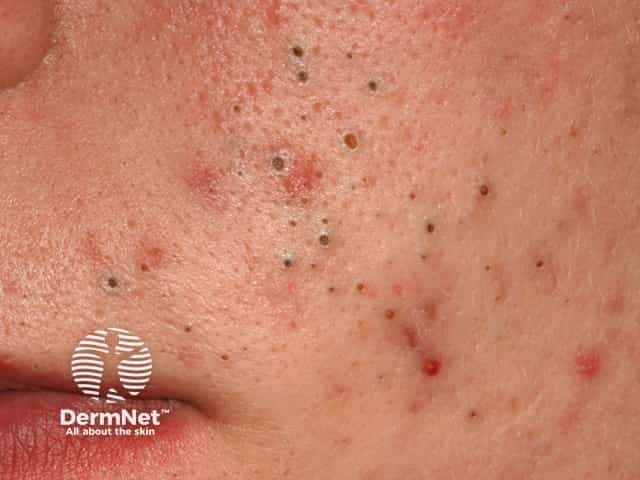
Open comedones
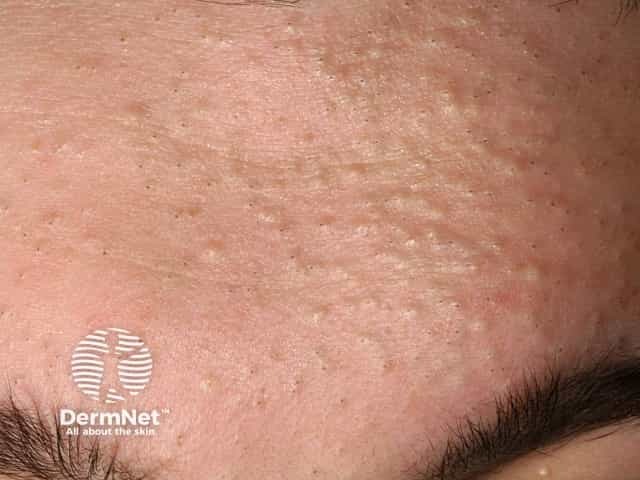
Closed comedones
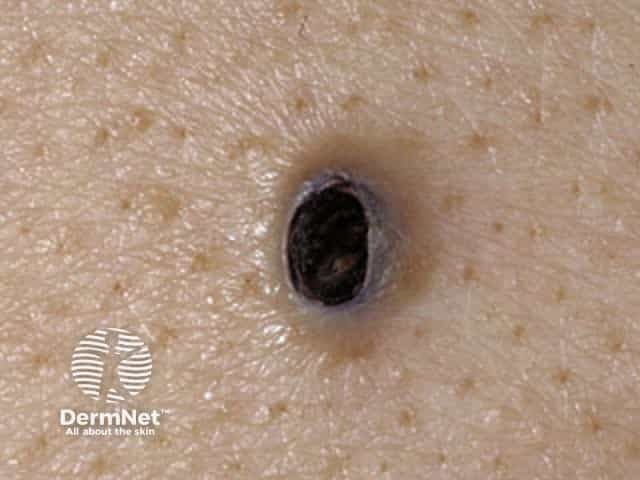
Giant comedo
What is comedonal acne?
Comedonal acne is a pattern of acne in which most lesions are comedones. Comedonal acne most often affects the forehead and chin.
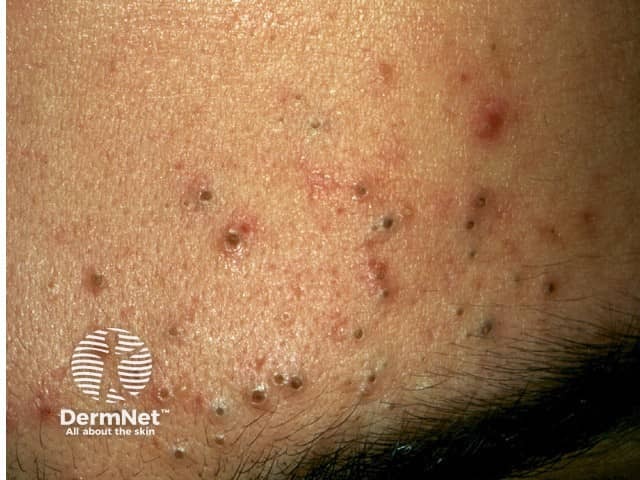
Open comedones
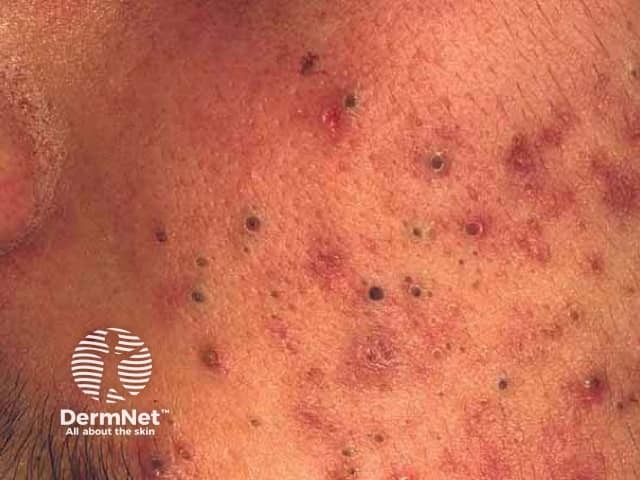
Comedonal acne

Comedonal acne
What causes comedones?
Comedones arise when cells lining the sebaceous duct proliferate (cornification), and there is increased sebum production. A comedo is formed by the debris blocking the sebaceous duct and hair follicle. It is now known that comedones also involve inflammation (see causes of acne).
The development of comedones may involve the following factors:
- Excessive activity of the male sex hormone 5-testosterone (DHT) within skin cells
- Reduced linoleate (the salt of the essential fatty acid, linoleic acid) in sebum causing more scale and reduced barrier function
- Proinflammatory cytokines (cell signalling proteins), such as Interleukin 1 (IL-1) and IL-8, produced by cells lining the follicle in response to activation of the innate immune system
- Free fatty acids made from sebum by acne bacteria
- Overhydrated skin premenstrually, from moisturisers or in humid conditions
- Contact with certain chemicals including oily pomades, isopropyl myristate, propylene glycol and some dyes in cosmetics
- Rupture of the follicle by injury such as squeezing pimples, abrasive washing, chemical peels or laser treatments
- Smoking – comedonal acne is more common in smokers than in non-smokers
- Certain dietary factors may contribute to comedonal acne, particularly milk products and high glycaemic-index foods (sugars and fats)
What is the treatment for comedonal acne?
If you have comedonal acne, choose oil-free cosmetics and wash twice daily with a mild soap and water. It is best to stop smoking and to have a diet that is low in sugar, fat and dairy products.
Choose "comedolytic" topical medications. These should be applied once or twice daily as a thin smear to the entire area affected. It may take several weeks to months before worthwhile improvement occurs. Treatment needs to be continued long-term (sometimes for many years).
Suitable topical agents include:
- Benzoyl peroxide
- Azelaic acid
- Salicylic acid +/- sulfur and resorcinol
- Glycolic acid
- Retinoids such as tretinoin, isotretinoin, adapalene (these require a doctor's prescription)
Prescription oral medications for comedonal acne include:
Antibiotics can also improve comedonal acne but are usually prescribed for inflammatory acne (acne vulgaris).
Surgical treatments are sometimes recommended to remove persistent comedones:
- Cryotherapy
- Electrosurgery (cautery or diathermy)
- Microdermabrasion
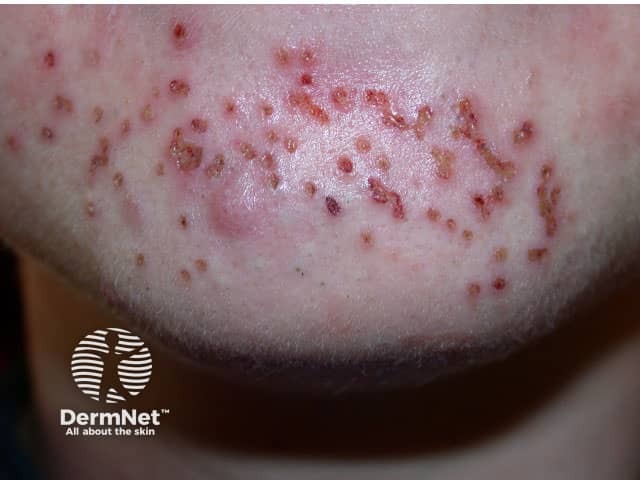
Electrosurgery to comedones
On DermNet
Other websites
- Acne Vulgaris — Medscape Reference
- Facial acne images
Books about skin diseases
